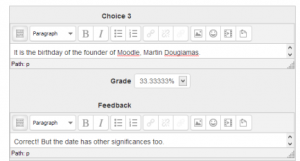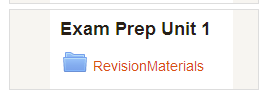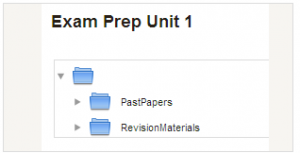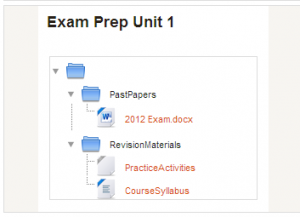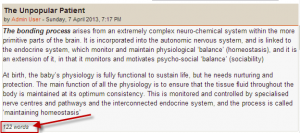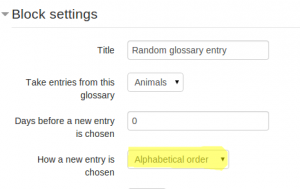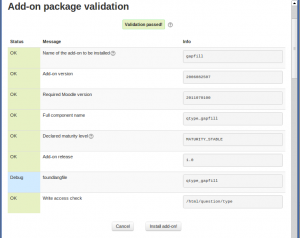New features: Difference between revisions
| Line 69: | Line 69: | ||
===New themes suited to all screen sizes=== | ===New themes suited to all screen sizes=== | ||
Many of your favourite sites around the web these days use Bootstrap as a base framework and now Moodle does too! We have a new 'base' theme called "'''Bootstrap'''" that implements the basics, and a new usable theme called '''Simple''' which extends it with some simple configuration options and also functions as a good template example for developing your own Bootstrap-based themes. | Many of your favourite sites around the web these days use Bootstrap as a base framework and now Moodle does too! We have a new 'base' theme called "'''Bootstrap'''" that implements the basics, and a new usable theme called ''''''Simple'''''' which extends it with some simple configuration options and also functions as a good template example for developing your own Bootstrap-based themes. | ||
Bootstrap allows us to responsively reformat the layout according to the screensize of the device used - on phone or tablet screens blocks move to the bottom, freeing up space for the main content at the top. In the future we hope everyone will want to migrate their Moodle themes to be Bootstrap-based. | Bootstrap allows us to responsively reformat the layout according to the screensize of the device used - on phone or tablet screens blocks move to the bottom, freeing up space for the main content at the top. In the future we hope everyone will want to migrate their Moodle themes to be Bootstrap-based. | ||
Revision as of 04:54, 12 April 2013
So what's new in Moodle 2.5?
Moodle 2.5 brings a lot of exciting new features for teachers, students and administrators. This page highlights some of the most useful and coolest. Click any screenshot to see it enlarged. The full details with technical information can be found in the Moodle 2.5 Release notes
For teachers and students:
Forms are much shorter
Moodle has a lot of settings and features, which means some of our forms have been getting rather long. We know this is daunting for new users!
We've made changes so that on-essential settings on forms are collapsed by default, yet you can quickly access them when you need them.
In a similar space-saver, you can choose whether or not to enable the rich text editor when creating quiz questions:
Folders can be displayed inline on a course page
You can now choose whether to have a folder show its contents in a separate screen, as previously, or to have it display them inline with any subfolders expanded:
Badges
It's now possible for teachers to award course badges based on chosen criteria. These badges may also connect with Mozilla Open Badges
Word count in forum posts
A new setting in forums will display the number of words in a post:
Templates for Essay question types
When using the Essay question type in a quiz, you can now set a template which appears in the students' text editor for scaffolding their response:
Glossary block enhancements
You can now use a global glossary in the random glossary block, and you can display the entries in alphabetical order:
For administrators:
New themes suited to all screen sizes
Many of your favourite sites around the web these days use Bootstrap as a base framework and now Moodle does too! We have a new 'base' theme called "Bootstrap" that implements the basics, and a new usable theme called 'Simple' which extends it with some simple configuration options and also functions as a good template example for developing your own Bootstrap-based themes.
Bootstrap allows us to responsively reformat the layout according to the screensize of the device used - on phone or tablet screens blocks move to the bottom, freeing up space for the main content at the top. In the future we hope everyone will want to migrate their Moodle themes to be Bootstrap-based.
Install add-ons from inside Moodle
It's now possible to install add-ons from within Moodle, rather than accessing folders on the server; useful for those admins who do not have FTP access. Add-ons can be uploaded and installed from a zip file or located and installed from the Moodle plugins directory:


